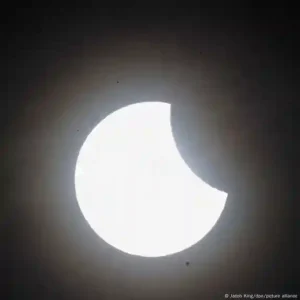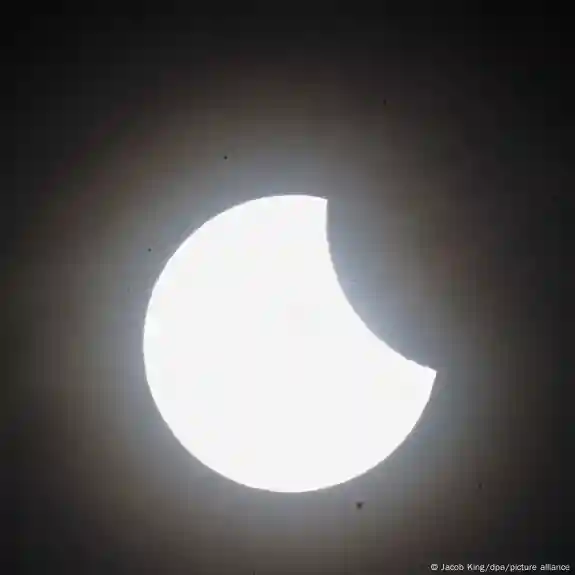Around 20% of the sun was covered by the moon, but cloudy skies meant the partial eclipse was not visible for all in most of Europe and parts of North America and Africa.

A partial solar eclipse was visible on Saturday from eastern North America, Greenland, most of Europe, northern Russia and parts of northwestern Africa.Up to one-fifth of the sun was obscured by the moon. The eclipse reached its peak at around 12:15 CET (1115 UTC/GMT) and lasted for a further 50 minutes.
The German Weather Service (DWD) had earlier dampened hopes of a cloudless sky, which would have allowed for clear views of the celestial spectacle.

Authorities warned German residents to avoid looking directly at the sun without protection, especially through binoculars or a telescope.
During a solar eclipse, the moon passes between the Earth and the sun. As the moon’s orbit is slightly tilted, a solar eclipse does not occur every month.

The next partial solar eclipse over Germany is due to fall on August 12, 2026, with more than 80% of the sun set to be covered.
Editor: Sean Sinico
DW News


